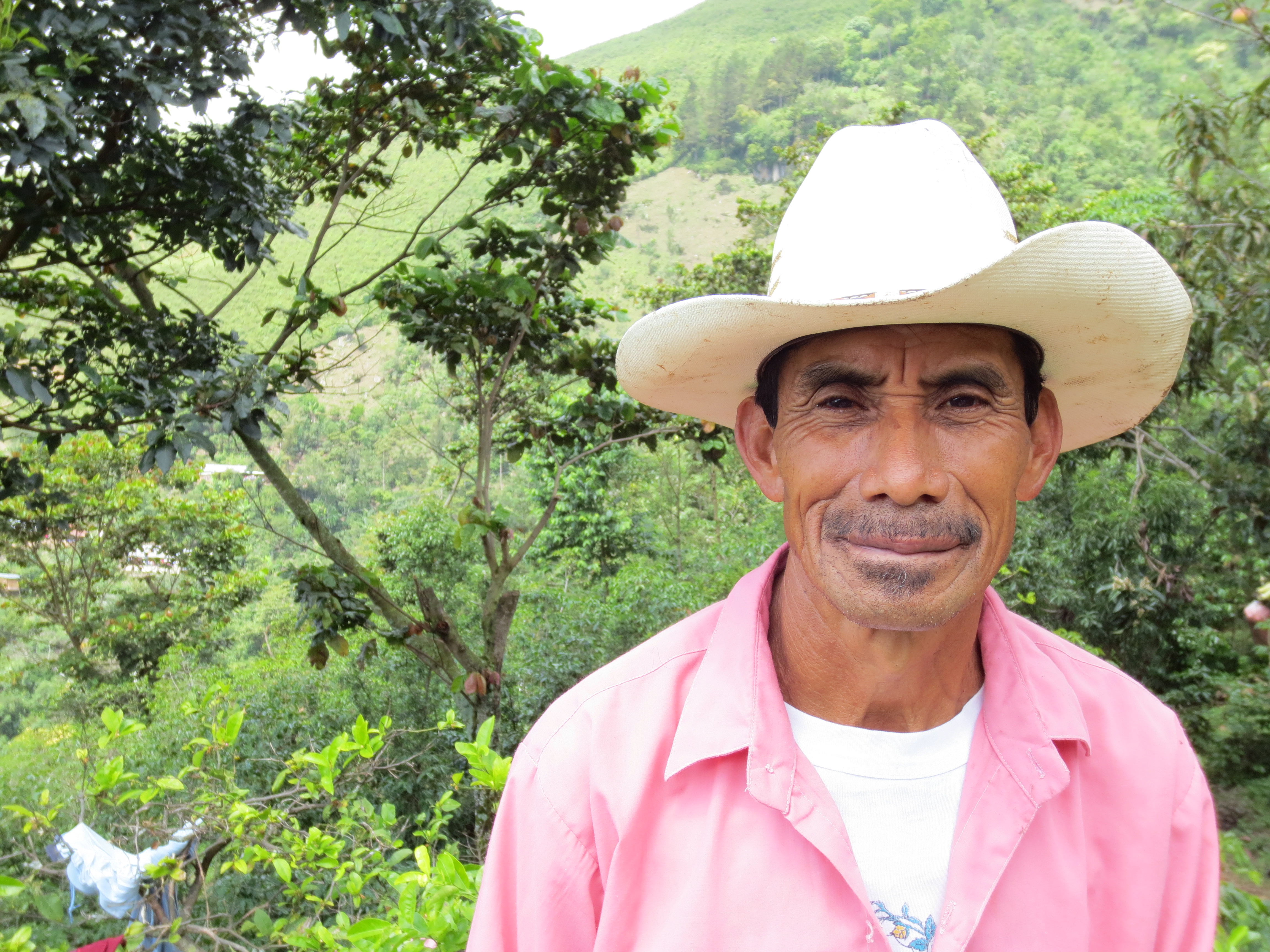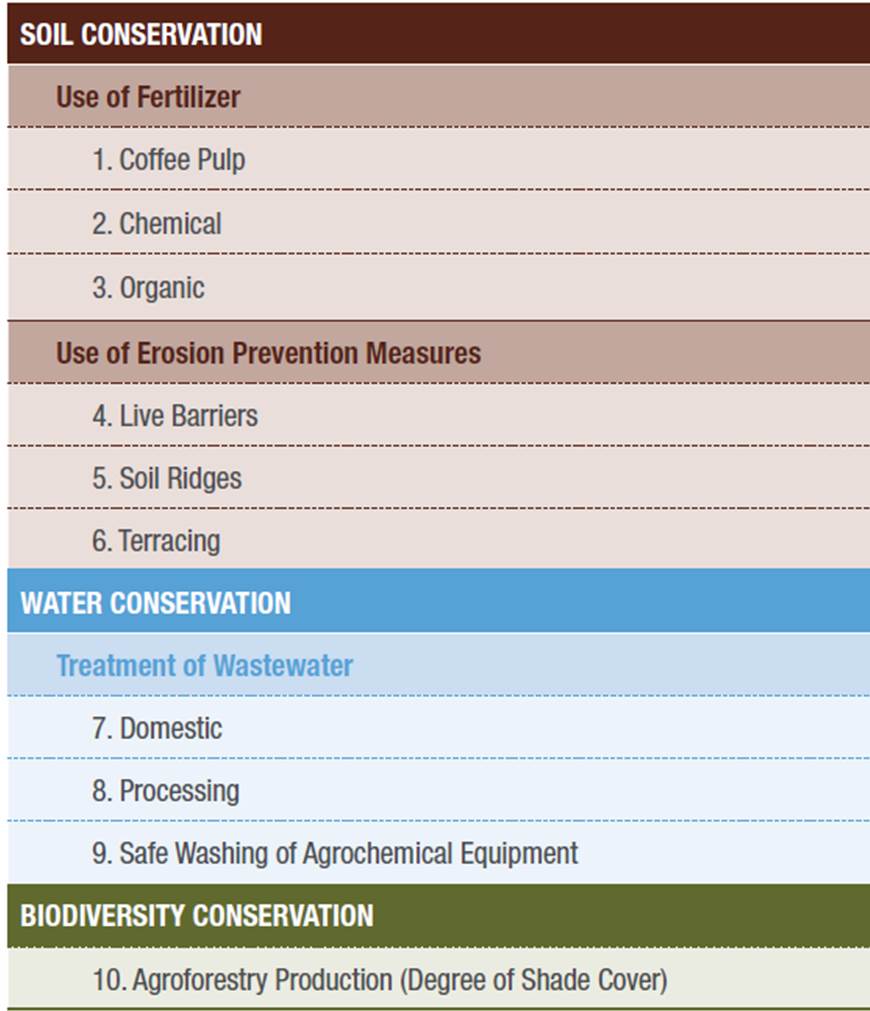Last month, we shared key findings from an impact study conducted with four Root Capital clients, coffee cooperatives in Guatemala. Together, these cooperatives provide market access for over 800 smallholder farmers, who generally own one to four hectares of land.
One of our findings was that membership in these cooperatives was associated with more widespread use of sustainable agricultural practices by farmers. In this post, we dive deeper into this finding and what it tells us about our clients’ potential impacts on the productivity and environmental health of their members’ farms.

First, how do we assess environmental impact?
Root Capital works with businesses that help smallholder farmers manage their land sustainably – and, in many cases, become better stewards of that land. Through our environmental due diligence data, we know that our clients provide individual farmers with subsidized inputs, training, and other resources that can help them adopt more sustainable farming practices.
In the Guatemala study, we explored whether and to what degree these four coffee cooperatives have impacted members’ use of sustainable farming practices, and, by extension, the productivity and environmental health of their coffee farms. We looked at ten specific practices:

What did we find in Guatemala?
We found that the cooperatives have, on the whole, helped their members adopt more sustainable farming practices.
All four clients provide extension services that can help farmers invest in sustainable farm management. These include:
- Ongoing training on coffee production and processing
- Subsidies for fertilizer and other agricultural inputs
- Credit for farm investments
In the words of one member:
“Now I’m training to be a better coffee farmer . . . Now we know more about how to plant the coffee, manage shade, and conserve the soil, things I did not know before. Since I’ve joined the cooperative, I’ve received this training, and I’m using it.”
In surveys and focus groups, members of all four cooperatives reported adopting several sustainable agricultural practices since joining their cooperatives. Members also reported higher usage of these sustainable practices than a comparison group of farmers who were not members of a cooperative. Specifically, cooperative membership was associated with higher usage of:
- Organic fertilizer. In the two organic-certified cooperatives, many more members – 31 and 49 percentage points more, respectively – are using organic fertilizer than nonmembers.
- Soil erosion prevention measures, including live barriers, soil ridges and terracing. In all four enterprises, more members are using soil erosion prevention measures than nonmembers. The degree of difference between members and nonmembers varied across the three measures.
- Treatment of domestic and coffee processing wastewater. Compared to nonmembers, more members of the three well-functioning cooperatives – between 8 and 70 percentage points more – are treating their coffee wastewater.
What does this mean for the environment?
The adoption of these sustainable farming practices is generally associated with improved environmental health at the farm-level.
For example, there is consensus among experts that the use of the soil conservation practices mentioned above generally leads to higher soil fertility and improved soil structure. Similarly, the adoption of the water conservation practices examined can lead to reduced contamination of local streams and rivers.
What about farmers’ yields?
Here, our data is mixed.
Members of the three “well-functioning” groups reported higher yields since joining their cooperatives several years ago. Recent yields of members and non-members, however, were quite similar, suggesting that cooperative membership was not in fact associated with higher productivity.
Despite the inconclusive evidence on yields, we found that two of the cooperatives have helped to increase their members’ resiliency to coffee leaf rust, a fungal disease affecting much of Central America’s coffee crop. Members of these groups reported much lower production losses than non-members within the same regions.
Most cooperative members, however, continue to suffer from low productivity relative to optimal yields for Central American smallholders.
Could the cooperatives do better?
In an upcoming post, we will discuss potential ideas for ways cooperatives might improve their extension services, either independently or with partners, with a focus on soil management. Stay tuned.

What do you think?